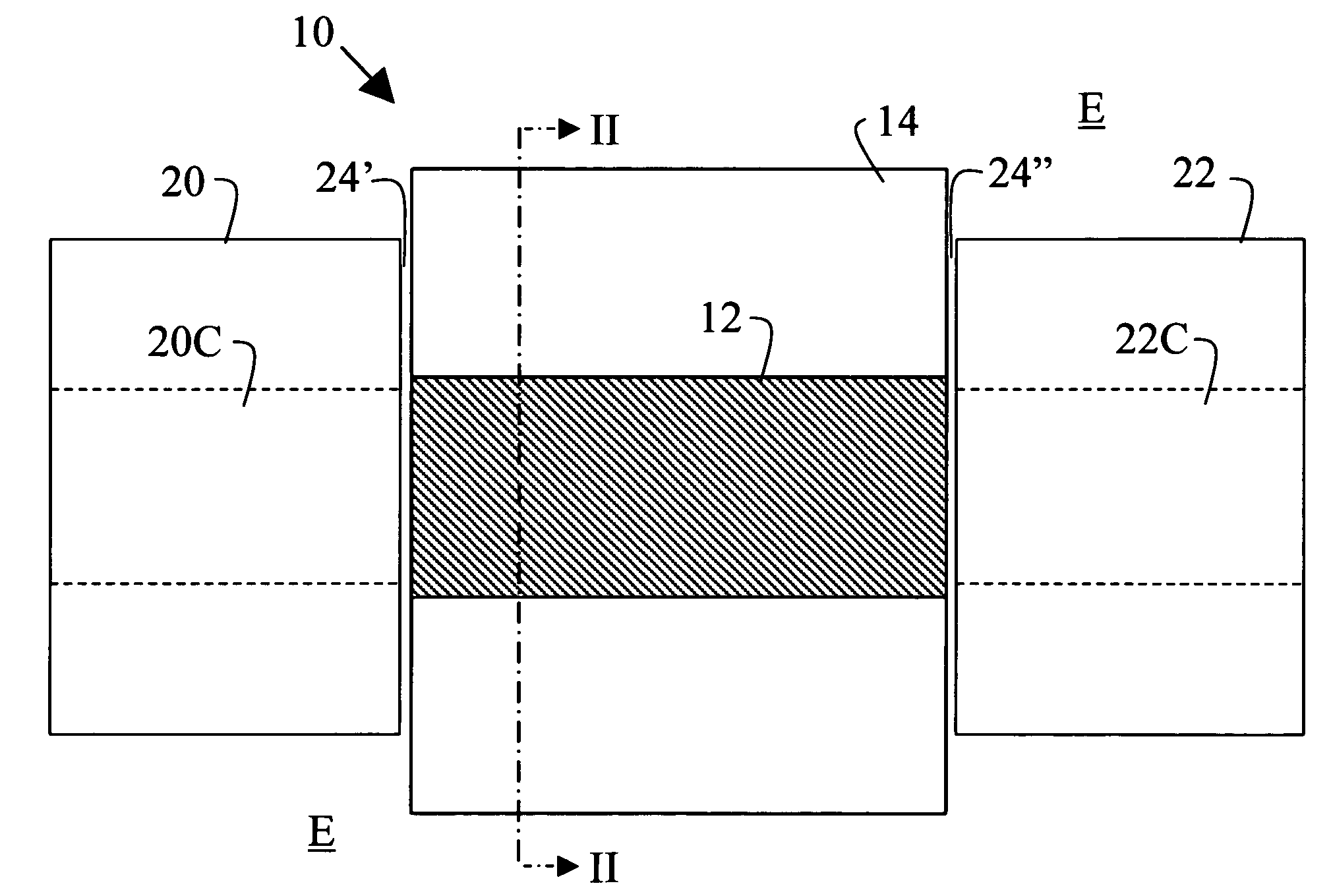Sensors
a technology of sensors and sensors, applied in the field of sensors, can solve the problems of insignificantaffecting the performance of the sensor, and affecting the performance of the sensor, and achieving the effect of improving the optical performance of the device, reducing the cost of storage and transportation, and improving the accuracy of the sensor
- Summary
- Abstract
- Description
- Claims
- Application Information
AI Technical Summary
Benefits of technology
Problems solved by technology
Method used
Image
Examples
example 1
[0092]The free-space operating wavelength was set to 1550 nm, SiO2 (∈r,2=1.4442) was selected as the material of the membrane 14, Au (∈r,3=−131.95−j12.65) was selected as the material of the strip 12, and vacuum (∈r,1=1) was selected as the environment E. The width w of the strip 12 was set to 8 μm, its thickness t was set to 30 nm, and the thickness d of the membrane 14 was varied from substantially 0 to about 65 nm for the purpose of illustrating its impact on the performance of the waveguide.
[0093]FIG. 6 gives the computed effective refractive index β / β0 of the ssb0 mode over the range of membrane thicknesses d. The effective refractive index of the TE0 and TM0 modes supported by the membrane 14 alone (i.e.: without the strip 12) was also plotted for reference.
[0094]FIG. 7 gives the computed attenuation of the ssb0 mode over the range of membrane thickness d, showing that the attenuation increases slightly with membrane thickness—indicating increasing confinement to the strip 12....
example 2
[0097]The free-space operating wavelength was set to 1310 nm, SiO2 (∈r,2=1.44682) was selected as the material for the membrane 14, Au (∈r,3=−86.08−j8.322) was selected as the material for the strip 12, and vacuum (∈r,1=1) was selected for the environment E. The width w of the strip was set to 6 μm, its thickness t was set to 30 μm, and the thickness d of the membrane was varied from substantially 0 to about 55 nm for the purpose of illustrating its impact on the performance of the waveguide.
[0098]FIG. 9 gives the computed effective refractive index of the ssb0 mode over the range of membrane thickness. The effective index of the TE0 and TM0 modes supported by the membrane 14 alone (i.e.: without the strip 12) was also plotted for reference.
[0099]FIG. 10 gives the computed attenuation of the ssb0 mode over the range of membrane thicknesses d, showing that the attenuation increases slightly with membrane thickness—indicating increasing confinement to the strip 12. The attenuation rem...
example 3
[0102]The free-space operating wavelength was set to 632.8 nm, Si3N4 (∈r,2=2.02112) was selected as the material of the membrane 14, Au (∈r,3=−11.7851−j1.2562) was selected as the material of the strip 12, and vacuum (∈r,1=1) was selected for the environment E. The width w of the strip 12 was set to 0.95 μm, its thickness t was set to 25 nm, and the thickness d of the membrane 14 was set to 20 nm. The computed effective refractive index of the ssb0 mode was 1.00898, its attenuation was 4.39 dB / 100 μm and its coupling loss to standard single mode fiber was 1.60 dB. For reference, the effective index of the TE0 and TM0 modes supported by the membrane 14 alone (i.e., without the strip 12) are 1.04412 and 1.00285, respectively. FIG. 30(a) gives the computed distribution of Re{Ey} over the waveguide cross-section.
[0103]Thus, when the free-space operating wavelength is set to 632.8 nm, the membrane 14 to Si3N4, the strip 12 to Au, and the environment to vacuum, the dimensions w=0.95 μm, t...
PUM
 Login to View More
Login to View More Abstract
Description
Claims
Application Information
 Login to View More
Login to View More - R&D
- Intellectual Property
- Life Sciences
- Materials
- Tech Scout
- Unparalleled Data Quality
- Higher Quality Content
- 60% Fewer Hallucinations
Browse by: Latest US Patents, China's latest patents, Technical Efficacy Thesaurus, Application Domain, Technology Topic, Popular Technical Reports.
© 2025 PatSnap. All rights reserved.Legal|Privacy policy|Modern Slavery Act Transparency Statement|Sitemap|About US| Contact US: help@patsnap.com



